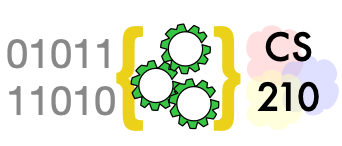Successive approximation#
Suppose you had a machine that was not very smart, but could compute things and check certain simple conditions very quickly. You might call such a machine a “computer”. If you directed it carefully, with something you might call a “program”, you might even make it appear smart, although really it would just be doing a lot of simple operations. For example, you could direct it to guess an answer (very badly!) and then make minor adjustments to improve its guess, until the refined guess looked like a smart answer. If it could do this quickly enough, it might even appear to be making smart choices.
Making a guess and then improving it is a basic optimization technique for many simulations of physical systems. The initial guess does not have to be good, provided we have some way of improving it, and improving it again, and so on until we have reached a good solution. Systems for setting the timing of traffic lights to optimize traffic work this way … it is likely that the timing of traffic lights in your current city was selected by the Transyt system, whose core method is exactly this.
Note
I chose the Transyt software as an example because I know it was used to set the light timings in Eugene, Oregon decades ago. I know because my first assignment as a junior programmer was to make that software work on the IBM mainframe computer then used by the city. I encountered Transyt again several years later, when my spouse was working for a transportation research group at University of California, Irvine. Useful programs last a long time, and evolve, sometimes through generations of programmers. The Transyt system today is different in some ways than the code I encountered many years ago. It may have been rewritten in a more modern programming language (or maybe not). The “guess and refine” approach to optimization has been extended in Transyt 7F to a modern genetic search algorithm that maintains multiple guesses for refinement, but the core approach remains the same. -MY
Simulations of physical systems are complex, but we can illustrate the approach more simply with a “system” that is just a math formula. Suppose we wanted to find the square root of a number greater than 1.0. Suppose all we knew is that
and that, for numbers greater than 1, \(m > n \implies m^2 > n^2\).
This is enough to get very close to a correct answer by
making a guess and refining it. (Exactly how close we can get is
complicated, because the computer uses a floating-point
approximation to real numbers.)
def guess_sqrt(n: float, error_bound: float) -> float:
"""n must be between 1.0 and 100,000.
error_bound must be greater than 0.00001
Returns a number q such that
q^2 - error_bound <= n <= q^2 + error_bound.
"""
# q must be between 1 and n
q_max = n
q_min = 1.0
# Execute the loop at least once
error = 2 * error_bound
while error > error_bound:
# Make a guess within bounds
q = (q_min + q_max) / 2.0
# How bad is it?
error = abs(q*q - n)
print(f"Guessed sqrt({n}) ≅ {q}")
print(f"\t off by {error}")
# Improve the guess by squeezing the bounds
if q*q > n:
# Too big!
q_max = q
else:
# Too small!
q_min = q
return q
s = guess_sqrt(2.0, .0001)
print(s)
Guessed sqrt(2.0) ≅ 1.5
off by 0.25
Guessed sqrt(2.0) ≅ 1.25
off by 0.4375
Guessed sqrt(2.0) ≅ 1.375
off by 0.109375
Guessed sqrt(2.0) ≅ 1.4375
off by 0.06640625
Guessed sqrt(2.0) ≅ 1.40625
off by 0.0224609375
Guessed sqrt(2.0) ≅ 1.421875
off by 0.021728515625
Guessed sqrt(2.0) ≅ 1.4140625
off by 0.00042724609375
Guessed sqrt(2.0) ≅ 1.41796875
off by 0.0106353759765625
Guessed sqrt(2.0) ≅ 1.416015625
off by 0.005100250244140625
Guessed sqrt(2.0) ≅ 1.4150390625
off by 0.0023355484008789062
Guessed sqrt(2.0) ≅ 1.41455078125
off by 0.0009539127349853516
Guessed sqrt(2.0) ≅ 1.414306640625
off by 0.0002632737159729004
Guessed sqrt(2.0) ≅ 1.4141845703125
off by 8.200109004974365e-05
1.4141845703125
In math courses you may encounter the Newton-Raphson method for estimating roots of a polynomial, using a better refinement to the guess in each iteration than I have used above, and other series that are essentially variations of this “guess and refine” approach.
If we don’t have a direct way of checking the error bound as we did
by squaring q, but we have upper and lower bounds on the answer
(like q_max and q_min above), then we can infer that the error
is at most q_max - q_min.
If we cannot even set some kinds of bounds around a solution (perhaps because the solution is not a number, but something more complex), we can at least determine whether we are getting the same guess or something different from iteration to iteration. If our guess is not changing, there is no point in continuing.
In our clustering project, we stop the loop when the assignment of locations to clusters stops changing. Usually this will be a pretty good solution, but it is not guaranteed. When the k-means clustering algorithm is used in practice, it is often run more than once with different initial guesses to increase the chance that it produces at least one very good solution.

